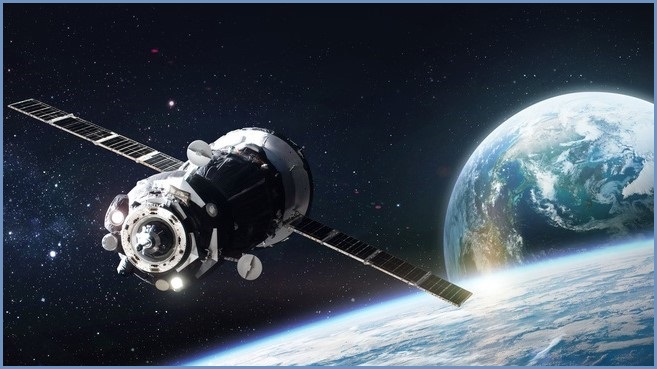Mobile devices will soon be able to pinpoint their location anywhere in Australia and New Zealand to within 10cm, after the federal government committed $1.18 billion over 19 years to operate the field-tested SouthPAN positioning network.
Designed to augment the existing global positioning system (GPS) system – which has become ubiquitous in smartphones, vehicles, drones, navigation and other devices – SouthPAN’s use of both satellites and fixed ground stations with known locations will let devices pinpoint their location within 10cm anywhere on land or at sea.
That’s at least 50 times better than the 5m to 10m accuracy of conventional GPS signals – and it can improve accuracy even more, to as little as 3cm to 5cm, in areas with good mobile phone network coverage.
This level of accuracy promises completely new applications: self-driving vehicles, for example, will improve collision detection by detecting not only which lane they are in, but which part of the lane – while devices will help visually impaired citizens navigate cities with pinpoint accuracy.
The new system’s high resolution is expected to help SouthPAN – one of numerous Satellite Based Augmentation System (SBAS) systems being rolled out around the world, and the first SBAS in the southern hemisphere – enable a broad range of industrial applications.
Between 2017 and 2019, a SBAS test-bed project – run by peak body Positioning Australia through a collaboration between Geoscience Australia, Toitū Te Whenua Land Information New Zealand, and FrontierSI – evaluated 27 such use cases, with over 150 partners across 10 industry sectors including aviation, agriculture, consumer, construction, maritime, rail, resources, road, spatial, and utilities.
The results of that project informed a formal economic benefits analysis, which concluded that a commercial SouthPAN network could generate $7.6 billion in new economic value across the two countries over the next 30 years.
In the context of these projections, the federal government’s decision to award a 19-year contract for SouthPAN to aerospace giant Lockheed Martin is being heralded as a game-changer for geospatial applications.
“SouthPAN will provide instant, accurate and reliable positioning to users across all of Australia and New Zealand’s land and maritime zones without the need for a mobile phone signal or internet,” Madeleine King, Minister for Resources and Northern Australia, said as the new contract was announced.
“We’ve already demonstrated that industry and the community can use this for ground-breaking applications that increase safety, improve productivity and drive innovation across a broad range of industries.”
Building a new geospatial reference
SBAS systems build on existing global navigation satellite system (GNSS) systems – of which the ubiquitous GPS is the best-known but just one of many in operation – by adding a range of fixed sites, called GNSS reference stations, each with a precisely known location.
SouthPAN-capable devices measure the strength of the signals from each of these sites to refine readings from multiple GNSS satellite network, then use sophisticated algorithms to calculate their location.
The more measurements that are available, the higher the accuracy of the measured location.
Algorithms continuously monitor for variations in the locations of the satellites or the transmission of the signal data, ensuring pinpoint accuracy in a range of conditions.
With work on SouthPAN under way since 2020 and the new contract locking the system in for the next 19 years, the project team will now establish a range of new reference stations.
Within weeks, the team plans to release its first precise, open-access positioning services – which will be available for use by any device manufacturer that builds compliant equipment.
By 2028, SouthPAN will be fully operational and is expected to have achieved “safety-of-life certification” – meaning it can be relied upon to support life-critical applications such as self-driving cars.
“SouthPAN provides crucial digital infrastructure for the future and we expect the actual benefits to be greater over the project’s lifespan,” said Damien O’Connor, New Zealand Minister for Land Information, who noted that “this technology was originally developed to support aviation safety, but as technology has advanced, the applications have expanded.”
“Beyond the horizon, new products on the market will use this infrastructure to create value in new ways for businesses and consumers.”









